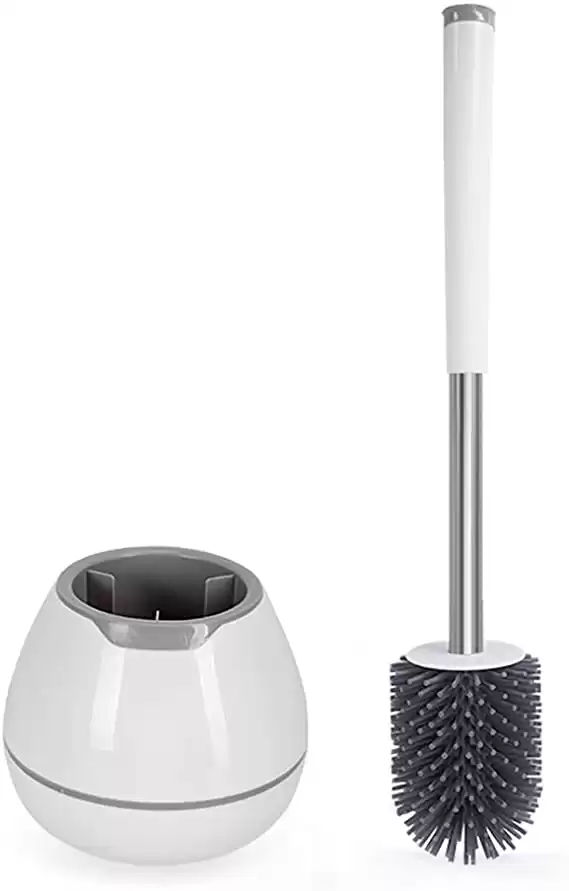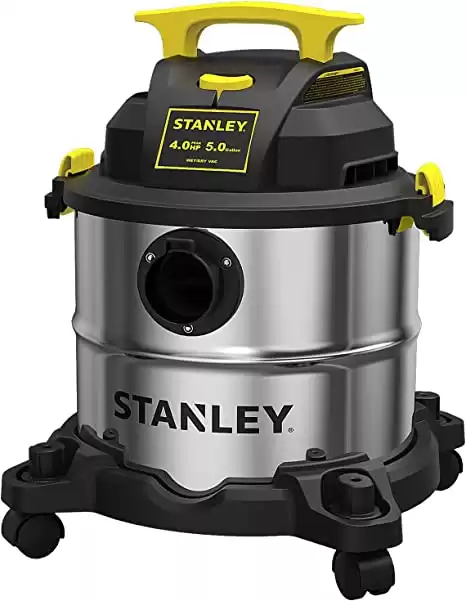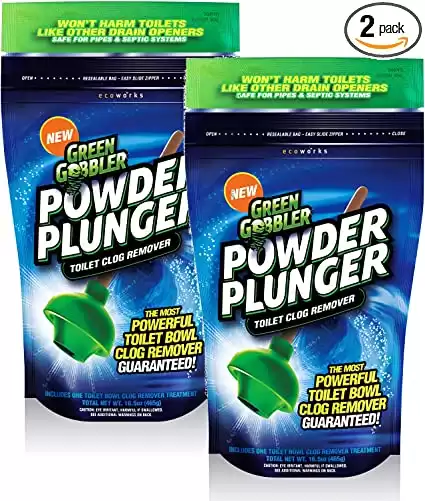The next time you have a clogged toilet, take solace in the fact that we’ve all been there. It might require your attention quickly but usually can be fixed with just some effort, and we’re here to help!
The
Why Is It Important To Know How To Unclog A Toilet
One of the most frustrating things for any homeowner is a broken toilet. The good news about this problem? It’s fixable! Toilet problems are often easy to diagnose and simple enough to solve on your own with some basic plumbing skills, and helpful tutorials like this one!
The ability to fix your own toilet can be a lifesaver for those times when you have no one else nearby who can help. Not only will this save you time but also money on expensive emergency plumbing repairs.
How To Unclog Toilet With A Plunger
A
Household plungers come in two different forms: The first one is known as a cup
The second kind of
Armed with the right plunger, let’s go unplug that pesky toilet blockage!
Proudly designed and made in the United States, the Beehive Max Toilet Plunger is the first plunger designed to fit both old and new high-efficiency toilets (HET). The best toilet plunger's t-handle and flexible, beehive shape head design, allow for an optimum grip and effective plunge in any toilet.
1. Fill Up The Bowl
The first step in the process is to fill up your toilet bowl with enough water so that half of it has been filled. The reason for this is because you want a seal over the outlet of the toilet and home some water leftover to fill up your
2. Flip Out The Flange
Ensure that the narrow part of the
On the majority of toilet plungers, this will be found in its folded-up position inside the
3. Fill Up The Plunger
Submerge the
This will increase its plunging force! Air is more compressible than water so the less air trapped inside the
4. Seal The Plunger To The Bowl
Line up the
5. Plunge Away
Now you can flex your plumbing muscles! You should push the
Slow, firm, and controlled plunges will ensure that the
Every time the
6. Check Your Progress
You’re almost done! After five or six thrusts carefully remove the
You will know right away when the blockage has been busted if the water level inside the toilet bowl drops significantly, whoosh!
If you still have a lot of standing water in your toilet, repeat the plunging process. Don’t get frustrated, even the pros have to plunge multiple times with stubborn blockages.
7. Test Flush
Once you are confident you sent that clog packing, it’s time to test your toilet.
Remove the toilet tank’s lid and flush your toilet. However, be prepared for an overflow! If the water in your toilet bowl doesn’t flow like it should, reach inside the toilet tank and press down on the flapper.
This will prevent additional water from filling your toilet bowl and spilling onto the floor, whoops!
If your toilet is flushing like normal, follow up with a few more test flushes to push the clog further down your plumbing and wash away any remaining debris.
8. Clean Up
Congratulations on clearing your clogged commode, but your not done just yet.
Finish up by cleaning the toilet bowl and your trusty
How To Unclog A Toilet Without A Plunger
As embarrassing and frustrating as it is to have a clogged toilet, what if you don’t have a
We’ve got your back when it comes to toilet blockages! Here is our comprehensive guide on how to unclog your toilet with items you may already have around your home.
Hot Water
Adding hot water to your toilet bowl and help soften the blockage and allow it to slip down your plumbing.
You can use hot water from your faucet or heat some water up on your stove or microwave. Just make sure the doesn’t reach the boiling point.
Protect Your Toilet
Pouring boiling water into your toilet can damage the porcelain or even cause it to crack, yikes!
After you add hot water to your toilet bowl allow it to sit a while to help loosen the clog. Be patient and top up the bowl with hot water as needed.
The majority of the time hot water is enough to clear a clogged toilet but you can boost your blockage busting power by combining hot water with our next tip.
No need for a slow stovetop or noisy microwave oven. This 1500-watt kettle brings water to a rolling boil in a matter of minutes!
Dish Soap
The grease-fighting
Use about half a cup of
Next, you can supercharge the soapy solution by adding hot (not boiling) water to the toilet bowl. The combination will help soften and lubricate the clog and allow it to be flushed away!
America's #1 liquid dish soap!
Vinegar
It’s time to raid your kitchen cabinets to unclog your toilet. But before you start, make sure that your toilet bowl is not filled to its brim because it might overflow once you combine the ingredients of this foaming cleaner.
If your toilet is about to overflow, remove some of the standing water. You can bail the water out with a
Once that is done, take one to two cups of the
The combined ingredients will start to bubble and fiz! And this chemical reaction with help bust up that blockage. Let the
Pour in some hot water to see if your plumbing is flowing again and repeat the
Sure, you know the little orange box.
But did you know that for more than 165 years, people have chosen pure, versatile, effective, safe, and affordable ARM & HAMMER™ Baking Soda for baking, household, and personal care uses!
Toilet Brush
If you’re running out of ideas and need to take drastic measures, try plunging the toilet with a few strokes from a toilet cleaning brush.
Using a
Pretend your
Just watch out for splashing while you attempt to clear a clogged toilet with a toilet cleaning brush!
Scrubs and removes stains without scratching.
The washable brush head drys fast making clean-up a joy!
Coat Hanger
When it comes to unclogging your toilet, a plumbing snake is one of the most popular devices that get people out of their predicament. But what if you don’t have access to one? Don’t worry! You can make your own from a wire
Don’t Scratch The Bowl
Use a wire
First, unwind the hanger and make it into a straight line, but leave the hook that goes on your closet rail as is.
If you are using an uncoated metal hanger, take a small to medium-sized
Next, put on some
Once it starts draining quickly, flush a few times to make sure it’s completely unclogged!
Plastic Wrap
It’s time to break out the Saran wrap! Plastic wrap is great at keeping food fresh but also works as a
You are going to need enough plastic wrap to completely seal up your toilet bowl. Make sure you are using good quality plastic wrap, the cheap stuff is likely to rip or tear while plunging.
Unclog your toilet in less than a minute!
Easy to install and use, toilet sticker plungers are a safe a clean way to clear your clogged toilet.
Start off by lifting up your toilet seat to expose the porcelain bowl. Then take a large piece of plastic wrap and wrap it around the toilet bowl. This may take several pieces of plastic wrap to completely cover the toilet bowl and create an airtight seal.
Now you can press down on the plastic wrap cover you have created and force the trapped air inside your toilet bowl down the drain. This should be enough air pressure to push that clog down the drain!
Follow this up with a good test flush and repeat this plastic wrap
Plastic Bottle
This method should be helpful as another last resort. First, empty out any excess water from the toilet bowl and grab an empty plastic bottle.
Completely fill the bottle with warm water and put on a set of
After that, use your thumb to cover the bottle’s top, then place your thumb with the bottle in hand at the toilet’s outlet.
Get ready! Immediately, take your thumb away and squeeze your bottle in order to release the water and force the clog through the toilet.
The hydro force from the water bottle might generate enough pressure to unplug your toilet but it may take a few attempts before your successful. Just be careful not to splash yourself!
Home Made Bathroom Bomb
Sounds explosive, right? But you can make your own de-clogger with a few household ingredients.
You can skip all of the non-essential items you find in most DIY bath bombs recipes. The basic ingredients you will need are:
- Four tablespoons of Epsom salt
- Two cups of
baking soda - Eight to ten tablespoons of dish detergent
- A few drops of essential oils. Completely optional but we like lavender or citrus to help mask any odors and leave your bathroom fresh when you are done
With your Epsom salt and
When your bathroom bomb is ready to use, take one out of the muffin liner and drop it into your toilet bowl. You can add four cups of warm water to help boost the clog-busting power of the bomb.
Allow the bathroom bomb to sit for a few hours before checking to see if the clog has been cleared.
Wet/Dry Vacuum
Another option to clear a clogged toilet is to suck out the blockage with a
Electrical Hazard
Do not under any circumstances use a regular vacuum! Ordinary household vacuums are not designed to suck up liquids and you run the risk of electrocution or serious damage to the vacuum cleaner.
First, grab a pair of
Then, use a
After you have made the seal, insert the vacuum downwards a couple of inches into the toilet’s drain. Once you turn the vacuum on, it will suck the clog out. Hoover to the rescue!
Great for both wet and dry pickups!
The Stanley stainless steel 5-gallon wet/dry vacuum features a powerful motor for industry-leading performance, providing maximum suction power for heavy-duty pickup.
Drain Enzymes
You can clear clogs made of organic waste with enzymatic drain openers. These drain cleaners consist of enzyme mixtures that help liquefy waste materials.
Most drain enzyme products are safe for you plumbing and septic systems plus they won’t harm the environment.
They work well on toilet paper and human waste but should not be used for blockages created from toys, crayons, or anything else that may have been accidentally flushed down the toilet, whoops!
You should follow the instructions on its container to prepare it, and then let it sit overnight inside your toilet bowl before flushing again. The next morning you’ll see that whatever was blocking up your pipes will be easily flushed away!
Drain Defense Build-Up Remover Powder helps prevent clogs in sinks, toilets and showers.
The enzyme-based formula breaks clogs by cleaning and removing build-up.
Toilet Auger
A
A plumbing snake, also known as a
You can learn all about how to properly snake a toilet with a toilet auger HERE.
Provides fast and safe clearing of toilet obstructions.
Chemical Drain Opener
When all else fails you can reach for a chemical drain opener. Drain cleaning chemicals should be used as a final option because you don’t want to add chemicals to your toilet and then risk splashing them on yourself or nearby bathroom surfaces when you use a
Some chemical drain openers can be quite harsh so always read and carefully follow the label and make sure the chemicals are designed for use in toilets.
Ensure that your bathroom is properly ventilated when using chemical drain openers and keep children and pets away while the chemicals are in use.
Don’t Mix Chemical Drain Openers
Never combine different chemical drain openers like a mad scientist. Some chemical mixtures can cause exothermic reactions which could harm you and your plumbing.
If you decide to use drain chemicals to clear a clogged toilet try and pick ones that are environmentally friendly and are safe to use with your plumbing materials. You can learn everything you need to know about chemical drain openers HERE.
The only drain opener that is safe to use in toilets.
Other caustic drain chemicals generate enormous amounts of heat which can crack your toilet bowl and lead to thousands of dollars in damage.
Leave Green Gobbler in your toilet bowl for a few hours or overnight in order to break through the toughest clogs!
Preventing Future Toilet Clogs
To avoid clogging your toilet, you should know the best ways to make sure this doesn’t happen. If prevention is better than using a toilet
- To avoid clogging the toilet, always use toilet paper sparingly. Too much paper can easily overload the drain and cause a clog! If you really want to cut back on your toilet paper use, consider installing a bidet.
- Make sure that whatever you are flushing down your toilet is made for toilet use. Do not flush thicker paper products such as
paper towels , wet wipes, feminine care products, etc. These items don’t break down like toilet paper does which can create serious plumbing issues. It’s best to dispose of these things in a trash can or other appropriate garbage receptacle instead. - Remember that children are still learning how to use a toilet, so be patient with them. Teaching them that the toilet is not a toy can save you from an expensive call to a plumber! Make sure they know that only flushing toilet paper (and not your keys) down the drain is acceptable.
When To Call The Pros
Despite all your effort, if you have tried everything and still can’t unclog the toilet, it’s time to get professional help.
Also, consider calling a plumber or drain cleaning specialist if you start to notice other plumbing fixtures are starting to back up as well. This is a sign of a more serious problem!
Let the plumber know of all the different attempts you have made and advise them of any chemicals you have used so the plumber can work safely.
Clogged Toilet, What Clogged Toilet?
There’s more than one way to unclog your toilet, and now you know many clever ways to clear a toilet no matter what plumbing tools you have handy!
Happy Plumbing!
Recommended Reading
How To Prevent Your Pipes From Freezing
Don't let your plumbing give you the winter blues! We will show you how to prevent your plumbing from freezing and how to thaw frozen pipes.
How To Snake A Toilet
Conquer that clogged commode with a toilet auger! We will show you how to properly snake a toilet and bust up that blockage!
How To Clean A Garbage Disposal And Prevent Odors
Nobody likes garbage disposal smells. We sill show you how to properly clean your garbage disposal and stop the stink in your kitchen!
How To Stop Your Water Heater From Making Scary Noises
Find out how to silence your water heater once and for all with our guide. Learn how to quite your water heater noises all by yourself!
How To Install A Garbage Dispoal Yourself
Installing a garbage disposal yourself is a pretty simple process. We will show you how to properly install, operate, and clean your new sink disposal.
Plumber’s Grease: What Is It And How Do You Use It
You hear a squeak in the shower. DO NOT panic! It’s not a fuzzy pest. We will show you how to stop that squeak with plumber's grease!




